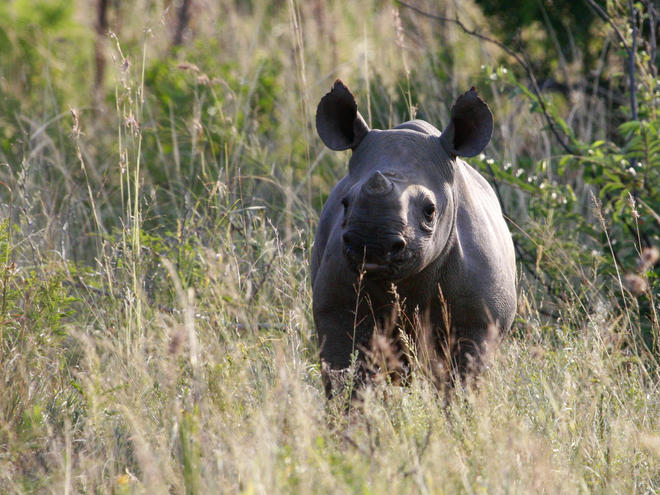Giving rhinos a lift since 2003
Published by the World Wildlife Fund




Rhinos, one of the oldest groups of mammals, are virtually living fossils. They once roamed across Africa’s savannas and Asia’s tropical forests, but today, very few rhinos survive outside of national parks and reserves.
WWF has worked for decades to stop rhino poaching, increase rhino populations, and protect their vital habitats. By conserving land for rhinos, we also help protect other important wildlife that share rhino habitat, such as elephants.
Specifically, WWF’s Black Rhino Range Expansion Project (BRREP) has been working with passion, commitment, and determination for a brighter future for the critically endangered black rhino for more than a decade. BRREP works to relocate rhinos and provide equipment and training to rangers to monitor, manage, and protect rhino populations.
More than 70 calves, like this one, have been born on BRREP’s project sites, which now span some 850 miles. Six calves were born on BRREP sites in the first seven months of 2016.
Over 160 black rhinos have been relocated by BRREP. The 11th black rhino translocation is planned for 2017. During translocations, the rhinos are first sedated and then carefully airlifted to a safe location.
Back in 2004, 15 black rhinos were released on to the first BRREP partner site in KwaZulu-Natal, South Africa. That population has grown so well that some of the offspring will soon be moved to form part of the project’s 11th breeding population.
In 2015, black rhino numbers in KwaZulu-Natal passed the milestone of 500. There has been a 21% increase in the black rhino population in KwaZulu-Natal since 2003. “When the project first began, the main concern was the slow population growth rate of the critically endangered black rhino,” explains project leader Dr. Jacques Flamand, pictured here with a recently relocated rhino. “Now population growth has increased, but so has poaching, so concern remains.”
Read the full article at: http://feedproxy.google.com/~r/WWFStories/~3/AthTPQYmSOw/giving-rhinos-a-lift-since-2003


